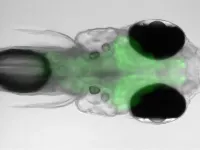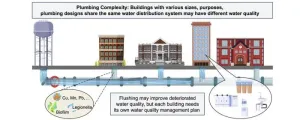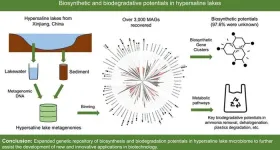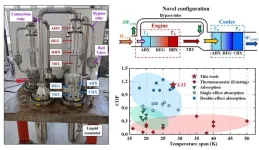(Press-News.org) EDMONTON — New research shows an innovative education program is helping to address Alberta’s rural doctor shortage by making it more likely medical students will set up a rural family practice after graduation.
The University of Alberta was one of the first medical schools in Canada to set up its Rural Integrated Community Clerkship program back in 2007. It sends up to 25 third-year students for 10-month intensive work experiences with a single or small number of teaching physicians.
Instead of rotating to a new specialty placement every four to six weeks as in an urban clerkship, the students learn about surgery, pediatrics, internal medicine, psychiatry, obstetrics and gynecology in an integrated fashion in one community such as Bonnyville, Peace River, Hinton or Camrose.
“The biggest advantage the rural clerkship students have is the relationships they develop with their teachers, with their patients and with their community,” explains principal investigator Jill Konkin.
In a recently published study, researchers tracked 1,105 U of A medical grads from 2009 to 2016. Of that cohort, 195 chose to become rural practitioners and 510 became family practitioners. Taking part in the rural clerkship was found to be a more reliable predictor for those choices than having a rural background.
“Integrated Community Clerkship participation had more influence than rural background on students’ choice of rural and/or family practice,” the authors report. “Our results show that the rural pipeline principle works.”
“We know how to make rural physicians,” concludes first author Darren Nichols, associate professor of family medicine, noting the students develop “adaptive expertise” that allows them to be ready to treat a variety of patients, rather than seeing a limited set of problems repeatedly as a specialist. “We can take any student, regardless of background or future career plan, and provide them the opportunity to have their life changed,” Nichols says. “They know how to approach any problem. That’s much harder than being a specialist.”
END
Rural placements for medical students feed ‘pipeline’ for new family docs
New study underscores success of U of A program in helping address Alberta's shortage of rural doctors
2024-02-01
ELSE PRESS RELEASES FROM THIS DATE:
Zebrafish navigate to find their comfortable temperature
2024-02-01
All animals need to regulate their body temperature and cannot survive for long if it gets too high or too low. Warm-blooded organisms like humans have various ways to do this. They release heat by sweating or expanding the blood vessels in their skin, while shivering or burning fat in their brown adipose tissue has the opposite effect.
Cold-blooded animals such as the zebrafish, by contrast, cannot do any of these, so they have a different strategy. They look for places nearby that are at their “comfortable temperature,” just like how we might go out into the sun when we feel chilly or seek out some shade once it gets too ...
Buck scientists discover a potential way to repair synapses damaged in Alzheimer’s disease
2024-02-01
While newly approved drugs for Alzheimer’s show some promise for slowing the memory-robbing disease, the current treatments fall far short of being effective at regaining memory. What is needed are more treatment options targeted to restore memory, said Buck Assistant Professor Tara Tracy, PhD, the senior author of a study that proposes an alternate strategy for reversing the memory problems that accompany Alzheimer’s disease and related dementias.
Since most current research on potential treatments for Alzheimer’s focuses on reducing the toxic proteins, such as tau and amyloid beta, that accumulate in ...
Researchers identify critical pathway responsible for melanoma drug resistance
2024-02-01
(Boston)—One of the major challenges in cancer research and clinical care is understanding the molecular basis for therapeutic resistance as a major cause of long term treatment failures. In cases of melanoma, the main targeted therapeutic strategy is directed against the mitogen-activated protein kinase (MAPK) pathway. Unfortunately, in the vast majority of these patients, resistance to MAPK inhibitor therapies develops within one year of treatment.
In a new study from Boston University Chobanian & Avedisian School of Medicine, ...
Pandemic lockdowns and water quality: a revealing study on building usage
2024-02-01
During the COVID-19 pandemic, lower occupancy in buildings led to reduced water use, raising concerns about water quality due to stagnation. Government warnings highlighted increased risks of chemical and microbiological contamination in water systems. Studies showed that reduced usage and stagnation could elevate heavy metal levels and decrease disinfectant effectiveness, affecting microbial growth. To address this, regular fixture flushing was recommended, which temporarily improved water quality but also revealed the complexities of managing building water systems effectively.
In a recent study (https://doi.org/10.1016/j.ese.2023.100314) ...
Exploring the unseen: microbial wonders in earth's saltiest waters
2024-02-01
The study delves into hypersaline lakes in Xinjiang, China, exploring the genetic and metabolic diversity of microbial communities termed "microbial dark matters". Hypersaline lake ecosystems, characterized by extreme salinity, harbor unique microorganisms with largely unexplored biosynthesis and biodegradation capabilities. The research seeks to uncover novel biological compounds and pathways, potentially revolutionizing biotechnology, medicine, and environmental remediation by tapping into the untapped potential of these extremophiles.
A recent study (https://doi.org/10.1016/j.ese.2023.100359) published ...
As cancer therapies improve, more patients with rectal cancer forego surgery
2024-02-01
While surgery to remove rectal cancer can be necessary and lifesaving, it can sometimes come with significant drawbacks, like loss of bowel control. According to a study led by Wilmot Cancer Institute researchers, patients with rectal cancer who respond well to radiation and chemotherapy are increasingly foregoing surgery and opting for a watch-and-wait approach.
The study, published in JAMA Oncology, shows that the number of patients opting out of surgery rose nearly 10 percent between 2006 and 2020. These data reflect a shift toward what ...
Stanford Medicine-led study shows why women are at greater risk of autoimmune disease
2024-02-01
Somewhere between 24 and 50 million Americans have an autoimmune disease, a condition in which the immune system attacks our own tissues. As many as 4 out of 5 of those people are women.
Rheumatoid arthritis, multiple sclerosis and scleroderma are examples of autoimmune disorders marked by lopsided female-to-male ratios. The ratio for lupus is 9 to 1; for Sjogren’s syndrome, it’s 19 to 1.
Stanford Medicine scientists and their colleagues have traced this disparity to the most fundamental feature differentiating ...
Researchers develop highly efficient heat-driven thermoacoustic refrigerator
2024-02-01
Researchers led by Prof. LUO Ercang from the Technical Institute of Physics and Chemistry (TIPC) of the Chinese Academy of Sciences and their collaborators have developed an innovative heat-driven thermoacoustic refrigerator (HDTR) with a novel bypass configuration that significantly improves the efficiency of this technology.
The study was published in Cell Reports Physical Science on Feb. 1.
HDTR is recognized as a new, promising cooling technology with many advantages. For example, it has no moving parts, uses eco-friendly substances (e.g., helium and nitrogen), and is highly reliable. However, its relatively low efficiency ...
Animals: Small, long-nosed dogs live the longest
2024-02-01
Small long-nosed (or dolichocephalic) dog breeds such as Whippets have the highest life expectancies in the UK, whilst male dogs from medium-sized flat-faced (or brachycephalic) breeds such as English Bulldogs have the lowest. The results, published in Scientific Reports, have been calculated from data on over 580,000 individual dogs from over 150 different breeds, and could help to identify those dogs most at risk of an early death.
Kirsten McMillan and colleagues assembled a database of 584,734 individual dogs using data from 18 different UK sources, including breed registries, vets, pet insurance companies, animal welfare ...
Physical activity and cognitive decline among older adults
2024-02-01
About The Study: Physical activity was associated with better late-life cognition, but the association was weak in this systematic review and meta-analysis including 104 studies with 341,000 participants. However, even a weak association is important from a population health perspective.
Authors: Paula Iso-Markku, M.D., Ph.D., of the University of Helsinki, Finland is the corresponding author.
To access the embargoed study: Visit our For The Media website at this link https://media.jamanetwork.com/
(doi:10.1001/jamanetworkopen.2023.54285)
Editor’s Note: Please see the article for additional information, including other authors, author contributions ...
LAST 30 PRESS RELEASES:
Making lighter work of calculating fluid and heat flow
Normalizing blood sugar can halve heart attack risk
Lowering blood sugar cuts heart attack risk in people with prediabetes
Study links genetic variants to risk of blinding eye disease in premature infants
Non-opioid ‘pain sponge’ therapy halts cartilage degeneration and relieves chronic pain
AI can pick up cultural values by mimicking how kids learn
China’s ecological redlines offer fast track to 30 x 30 global conservation goal
Invisible indoor threats: emerging household contaminants and their growing risks to human health
Adding antibody treatment to chemo boosts outcomes for children with rare cancer
Germline pathogenic variants among women without a history of breast cancer
Tanning beds triple melanoma risk, potentially causing broad DNA damage
Unique bond identified as key to viral infection speed
Indoor tanning makes youthful skin much older on a genetic level
Mouse model sheds new light on the causes and potential solutions to human GI problems linked to muscular dystrophy
The Journal of Nuclear Medicine ahead-of-print tip sheet: December 12, 2025
Smarter tools for peering into the microscopic world
Applications open for funding to conduct research in the Kinsey Institute archives
Global measure underestimates the severity of food insecurity
Child survivors of critical illness are missing out on timely follow up care
Risk-based vs annual breast cancer screening / the WISDOM randomized clinical trial
University of Toronto launches Electric Vehicle Innovation Ontario to accelerate advanced EV technologies and build Canada’s innovation advantage
Early relapse predicts poor outcomes in aggressive blood cancer
American College of Lifestyle Medicine applauds two CMS models aligned with lifestyle medicine practice and reimbursement
Clinical trial finds cannabis use not a barrier to quitting nicotine vaping
Supplemental nutrition assistance program policies and food insecurity
Switching immune cells to “night mode” could limit damage after a heart attack, study suggests
URI-based Global RIghts Project report spotlights continued troubling trends in worldwide inhumane treatment
Neutrophils are less aggressive at night, explaining why nighttime heart attacks cause less damage than daytime events
Menopausal hormone therapy may not pose breast cancer risk for women with BRCA mutations
Mobile health tool may improve quality of life for adolescent and young adult breast cancer survivors
[Press-News.org] Rural placements for medical students feed ‘pipeline’ for new family docsNew study underscores success of U of A program in helping address Alberta's shortage of rural doctors




